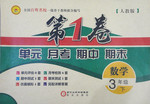题目内容
At 18, many American young people go off on their own. They go away to college or find full-time jobs, and they often rent their own apartments. Some get married and start families. This independence(独立性)is learned from childhood. From an early age, American children learn responsibility.Children as young as 2 begin to put away their toys and dress themselves. At 3, many children do simple chores like setting the table.
Using money wisely is also taught early. As soon as a child understands the value of money, he or she receives a weekly allowance. This is used for things the child wants, like toys or treats. The child can spend of save it, usually with little guidance(指导) from parents. If the child wants money besides his or her allowance, it must be made by doing extra chores.
Children are taught early in life to think for themselves. They are allowed to make some decisions-and make mistakes. Failure(失败) often teaches more than success.
1.Many American young people begin to live on themselves _____ .
A. at eighteen years old B. from childhood
C. after they get married D. from an early age
2.An American child learn to _____ at the age of 2 .
A. find a full-time job B. from childhood
C. put on his or her own clothes D. do lots of chores
3.The word “allowance” (in paragraph 3 ) means ______ in Chinese.
A. 奖品 B. 零花钱 C. 财产 D. 礼物
4.A child can get some more money by ______.
A. understanding the value of money B. helping the rich
C. reading many books D. doing extra chores
5.The passage is mainly about ______ .
A. the independence of American children
B. the value of money
C. the guidance from parents
D. failure and success of American children
1.A
2.C
3.B
4.D
5.A
【解析】
试题分析:这篇短文告诉我们在美国还在在满18岁后就要依靠自己生活,这种独立性是从小培养的。短文中重点描述了在生活中是如何培养孩子的独立性的。
【1.根据At 18, many American young people go off on their own.可知选A。
2.根据Children as young as 2 begin to put away their toys and dress themselves.可知选C。
3.根据上下文描述可知这个单词与钱有关,故选B。
4.根据If the child wants money besides his or her allowance, it must be made by doing extra chores.可知选D。
5.通过本文描述可知短文主要是讲了美国孩子的独立性,故选A。
考点:关于美国孩子教育的说明文
点评:本文浅显易懂,层次分明,学生很容易把握文中中心内容。答题中注意带着问题阅读短文,一般就能顺利找出答题依据。对于不能直接找到根据的问题注意联系上下文,根据短文中心总结出正确答案。

 第1卷单元月考期中期末系列答案
第1卷单元月考期中期末系列答案Mr. Smith lived in a village far away __ 16_ a town . One day he felt very ill and every one 17 he would die . They sent for a doctor . The doctor 18 and looked at the man closely . The doctor asked for a pen and ___19 paper to write down the name of the medicine(药). But there was no pen _20 _ paper because all the villagers never went to school before. The doctor had to use a piece of charcoal to write down the name of the medicine on the door of the house. “Get this medicine for him .” he said , “and he will ___ 21 _ get better .” Mr Smith’s family and friends didn't know _ _22__ to do . They could not read the __ 23_ writing . Then Mr. Smith’s son had an idea . He shut ___24 the door of the house , put it on his back and ran to the nearest town . He bought the medicine , he soon got rid of his __ 25 . He would not let anyone wash the magic words from the door .
| 【小题1】 |
|
| 【小题2】 |
|
| 【小题3】 |
|
| 【小题4】 |
|
| 【小题5】 |
|
| 【小题6】 |
|
| 【小题7】 |
|
| 【小题8】 |
|
| 【小题9】 |
|
| 【小题10】 |
|
Mr. Smith lived in a village far away __ 16_ a town . One day he felt very ill and every one 17 he would die . They sent for a doctor . The doctor 18 and looked at the man closely . The doctor asked for a pen and ___19 paper to write down the name of the medicine(药). But there was no pen _20 _ paper because all the villagers never went to school before. The doctor had to use a piece of charcoal to write down the name of the medicine on the door of the house. “Get this medicine for him .” he said , “and he will ___ 21 _ get better .” Mr Smith’s family and friends didn't know _ _22__ to do . They could not read the __ 23_ writing . Then Mr. Smith’s son had an idea . He shut ___24 the door of the house , put it on his back and ran to the nearest town . He bought the medicine , he soon got rid of his __ 25 . He would not let anyone wash the magic words from the door .
|
1. |
|
|
2. |
|
|
3. |
|
|
4. |
|
|
5. |
|
|
6. |
|
|
7. |
|
|
8. |
|
|
9. |
|
|
10. |
|
